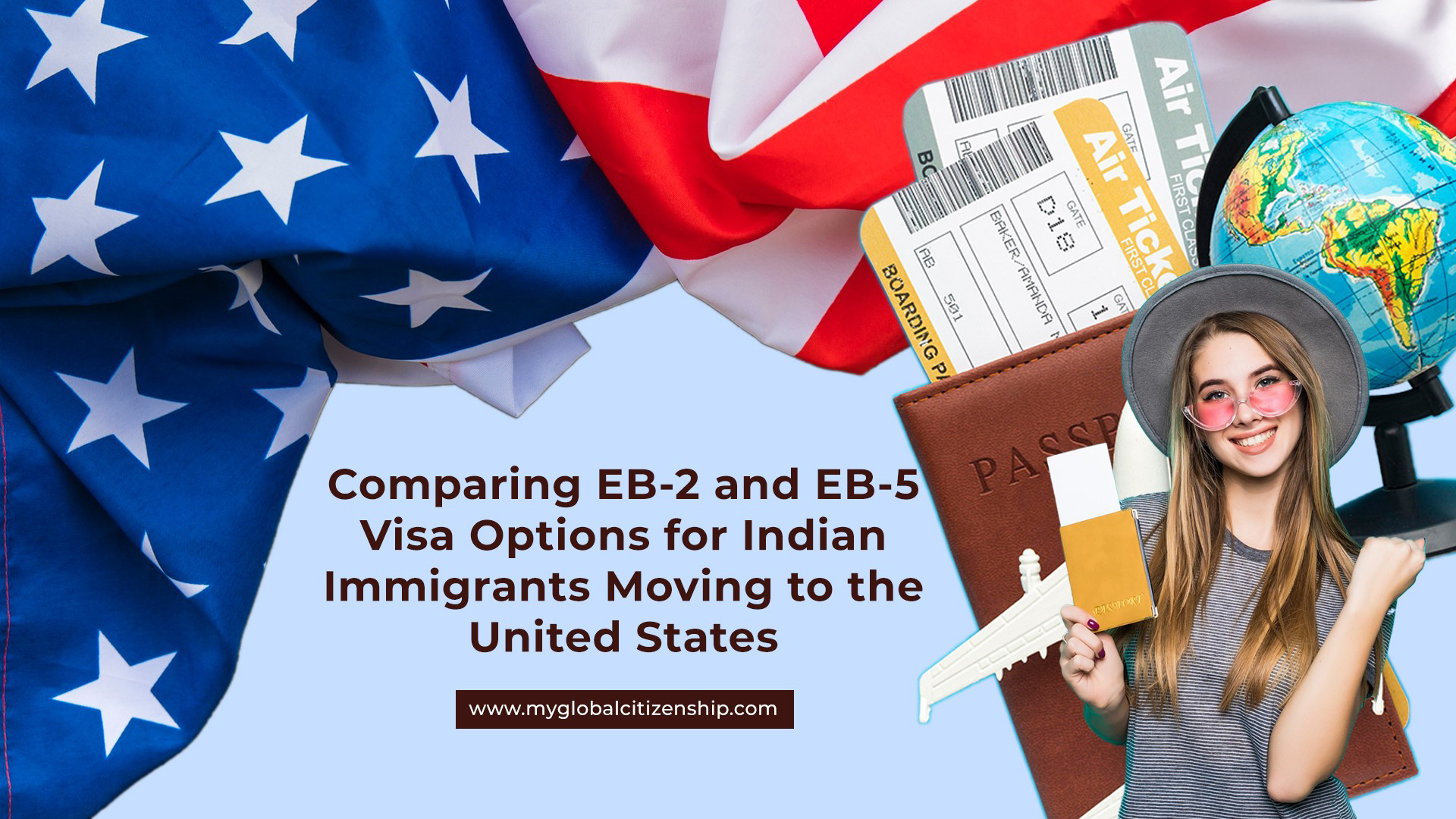Choosing the appropriate visa category might be challenging for Indian immigrants looking for greater possibilities in the United States. The EB-2 and EB-5 visas are two of the many possibilities offered and are frequently chosen. If a National Interest Waiver (NIW) has not been granted, a company must apply for and get a PERM certification in order to sponsor professionals with advanced degrees or exceptional ability in their fields for them to be eligible for an EB-2 visa. While the EB-5 visa process USA provides a pathway to obtain a green card through investment and creating a minimum of 10 full-time jobs. To make an informed decision that aligns with their investor’s circumstances and goals, Indian immigrants must have a comprehensive understanding of these visa options, including their eligibility criteria, benefits, and key differences.
Comparing EB-2 and EB-5 Visas
The main distinction between the two visa categories is that the EB-2 visa would require one to have a sponsoring employer (unless applying for a ) whereas the EB-5 visa process USA would only require a qualifying investment.
Eligibility:
The EB-2 visa is primarily geared toward highly skilled professionals, while the EB-5 program eligibility USA is for investors with sufficient investment capital. Eligibility criteria are different for both processes. For example, EB-2 Visa requires a sponsor whereas EB-5 does not require dependency on such a factor. The EB-2 visa focuses on applicants with advanced degrees, exceptional ability, and those who possess labour certification. For EB-5 Visa the investment amount is done to a commercial enterprise enabling creation of jobs thus helping the economy of the country.
Job Requirements:
While the EB-5 visa process USA requires the creation of 10 full-time employment for Americans, the EB-2 visa needs a job offer from a U.S. firm. The start-up company concept must be highly meritorious, of national significance, and advantageous to the United States.
Source: IIUSA.ORG
The graph above depicts the estimated inflow of capital to the US economy with the EB-5 investments. The graph shows an increase till the year 2015 followed by a decrease. It is seen that during the covid times, a maximum fall in the investment inflow occurs.
Investment money
The EB-2 visa does not require any investment money, although premium processing will incur a charge of USD 2,500. This is a significant advantage of the EB-2 program as processing their application under other visa categories might take up to several years. The EB-5 program eligibility USA is favourable to investors who would like to obtain their citizenship by investment by making a positive impact to the economy. For the EB-5 program, the minimum investment would be $1.05 million unless investing in a targeted employment area (TEA), where the minimum investment is reduced to $800,000.
Green Card Processing Time
According to USCIS processing estimates, the processing period for I-526 Immigrant applications for EB-5 visa process USA ranges from 29.5 to 61 months as of May 2023. A further chance to avoid processing delays is provided under the EB-5 Reform and Integrity Act of 2022 (the “RIA”) for Indian EB-5 investors who participate in rural projects. USCIS sets aside 20% of the total EB-5 visa supply for rural TEA projects.
Source: IIUSA.ORG
The Form I-526 is an important application form that has to be approved so that the investor can apply for an EB-5 Visa. The above data indicates that for the year 2023 677 forms have been approved till March which seems like an increase compared to the year 2022.
No Visa Re-Stamping
Holders of an EB-5 visa are not required to get a new visa to enter or exit the country. This removes the inconvenience and unpredictability of retaining legal status while awaiting the approval of the EB-2 visa.
Conclusion
An important choice for Indian immigrants hoping to immigrate to the US is choosing a suitable visa type. The divergence between the US EB-2 and EB-5 program eligibility USA has been thoroughly examined. For those possessing advanced degrees or exceptional talents, the EB-2 visa unveils a direct route to a green card via a job offer from a US corporation. Conversely, the EB-5 visa empowers investors to engage in a fresh enterprise, qualifying them for a green card along with various business opportunities and personal benefits. Navigating the intricacies of US immigration and selecting the optimal visa necessitates seeking guidance from an immigration lawyer or specialist. Ultimately, by carefully considering the merits and drawbacks of the EB-2 and EB-5 program eligibility USA and other options, Indian immigrants can make a decision aligning with their goals and aspiration.




